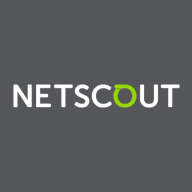

Splunk Observability Cloud and NETSCOUT vSTREAM are competing in the observability and network monitoring market. Splunk Observability Cloud holds an advantage in integration and scalability, while NETSCOUT vSTREAM is favored for its extensive network performance monitoring features.
Features: Splunk Observability Cloud is recognized for real-time data analytics, custom dashboards, and machine learning capabilities. NETSCOUT vSTREAM offers robust network traffic analysis, application-aware insights, and in-depth network-specific metrics.
Ease of Deployment and Customer Service: Splunk Observability Cloud enables straightforward and quick cloud-based setup, ideal for rapid deployment. NETSCOUT vSTREAM has a slightly more complex deployment but is supported by detailed documentation. Splunk is noted for responsive customer service, whereas NETSCOUT provides thorough service though may require more internal resources at the start.
Pricing and ROI: Splunk Observability Cloud generally has flexible pricing plans, providing quicker returns with fewer upfront costs, benefiting budget-conscious businesses. NETSCOUT vSTREAM may involve a higher initial investment but offers advanced features and appealing ROI for enterprises needing comprehensive network monitoring.
| Product | Market Share (%) |
|---|---|
| Splunk Observability Cloud | 1.2% |
| NETSCOUT vSTREAM | 0.3% |
| Other | 98.5% |

| Company Size | Count |
|---|---|
| Small Business | 20 |
| Midsize Enterprise | 10 |
| Large Enterprise | 43 |
The vSTREAM virtual appliance complements existing Adaptive Session Intelligence (ASI)-based instrumentation to provide the same level of visibility within virtualized and cloud infrastructures that is already possible in physical environments. The vSTREAM virtual appliance is ideal for monitoring service-critical traffic running within virtualized or cloud infrastructures, either locally on a host or as an aggregation point for multiple hosts. With complete visibility across physical, virtual and cloud networks, the vSTREAM virtual appliance presents real-time views of end-to-end call trace data and network-wide KPIs, to protect the reliability and availability of networks and application services.
Splunk Observability Cloud offers sophisticated log searching, data integration, and customizable dashboards. With rapid deployment and ease of use, this cloud service enhances monitoring capabilities across IT infrastructures for comprehensive end-to-end visibility.
Focused on enhancing performance management and security, Splunk Observability Cloud supports environments through its data visualization and analysis tools. Users appreciate its robust application performance monitoring and troubleshooting insights. However, improvements in integrations, interface customization, scalability, and automation are needed. Users find value in its capabilities for infrastructure and network monitoring, as well as log analytics, albeit cost considerations and better documentation are desired. Enhancements in real-time monitoring and network protection are also noted as areas for development.
What are the key features?In industries, Splunk Observability Cloud is implemented for security management by analyzing logs from detection systems, offering real-time alerts and troubleshooting for cloud-native applications. It is leveraged for machine data analysis, improving infrastructure visibility and supporting network and application performance management efforts.
We monitor all Network Monitoring Software reviews to prevent fraudulent reviews and keep review quality high. We do not post reviews by company employees or direct competitors. We validate each review for authenticity via cross-reference with LinkedIn, and personal follow-up with the reviewer when necessary.